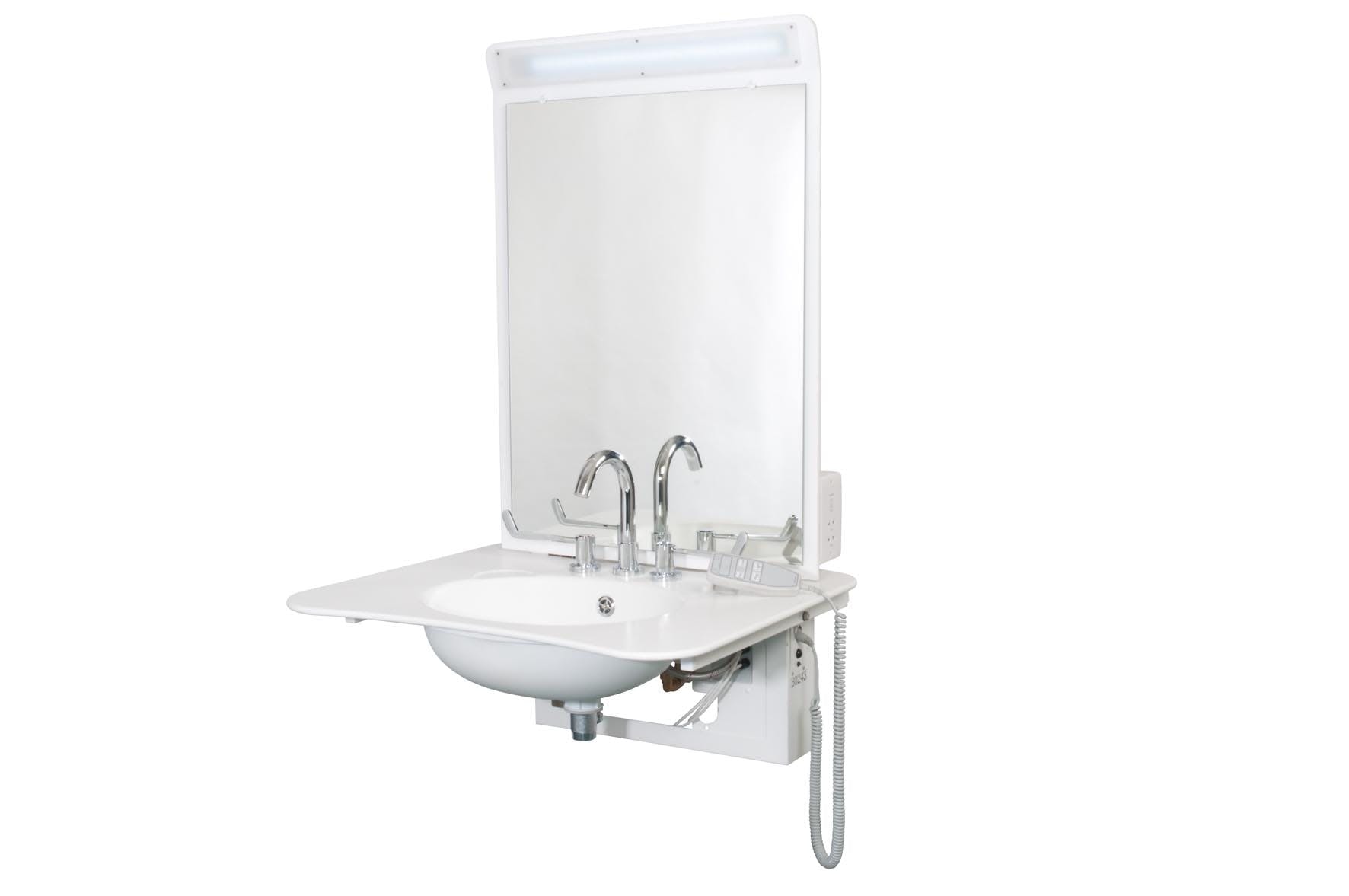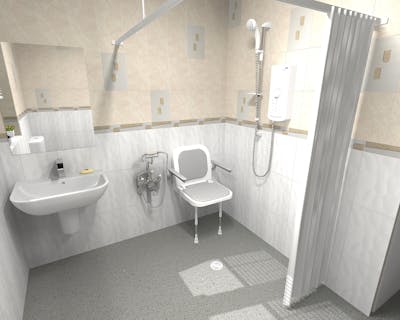Disabled Basin Guide | More Ability
Published: 20 January 2021
Installing a disabled basin is a great way to help to improve safety and independence in the bathroom.
Whether your bathroom is just used by you or the whole family, the variety of disabled sink designs, their functions and unique benefits means that you can install a disabled basin in your current or new bathroom without having to compromise on style.
Breaking down the different types of disabled basin, including their designs and benefits, this comprehensive article also answers common questions like what the height of a disabled basin should be.
What Different Types Of Disabled Basins Are Available?
Catering for all eventualities and progressively changing needs, there are five main types of disabled basin.
1) Rise And Fall Disabled Basins
A popular multi-generational solution, rise and fall disabled basins can be adjusted in height using a remote control, to best suit the user.
With the ability to rise and fall to a height of up to 450mm, they can be used standing upright, eliminating the need to bend and potentially strain your back, or whilst sat in a wheelchair.
Rise and fall disabled basins are also available with a fitted mirror, LED lights and shaver sockets that move in tandem with the height of the basin.

2) Low Height Disabled Basins
Another solution we suggest is low height disabled basins. Fixed permanently to a lower height, this disabled basin solution is best suited for wheelchair users and in bathrooms that aren’t used by other users
3) Curved Disabled Basins
Available in a range of sizes, curved disabled sinks have a concave front for easy access that allows the user to get closer to the basin and taps, ideal for brushing teeth and shaving.
4) Grab Bar Assisted Disabled Basins
Also available with a concave front, this disabled basin option includes grab bars, offering further support and stability while in use.
They have a wider surface area than a traditional sink for easy access to bathroom amenities and to help avoid any potential water spillages over the side.

5) Swing Disabled Basins
A smart disabled basin solution, especially for those with limited mobility, swing disabled basins are attached to the wall with a fixed pivot arm that can be turned 180 degrees.
The shape and size of this swing disabled basins allows users, whether seated or standing, to use the basin from any angle.
What Height Should A Disabled Basin Be?
Document M recommends disabled basins should be fit to a height of between 720-740 mm.
However, in a domestic setting the fixed height of a disabled sink should be dependent on what the most comfortable height is for the user and their requirements. Bearing this in mind if your bathroom is used by multiple occupants of varying needs, we recommend the installation of a rise and fall disabled basin, where the height can be regularly adjusted.
To find out more about Document M, in particular the design layout and size requirements for disabled bathrooms and washrooms, read our comprehensive guide to disabled toilet sizes.

We hope you found our article on disabled basins useful and informative. If you have any further questions regarding the types of disabled basins please call a friendly member of our team or book a free design appointment online.
Share this Post






.jpg?auto=compress%2Cformat&cs=strip&fit=clip&h=400&ixlib=php-1.1.0&w=400&s=9fa3862dd64550f902ce5099d00692fb)



















